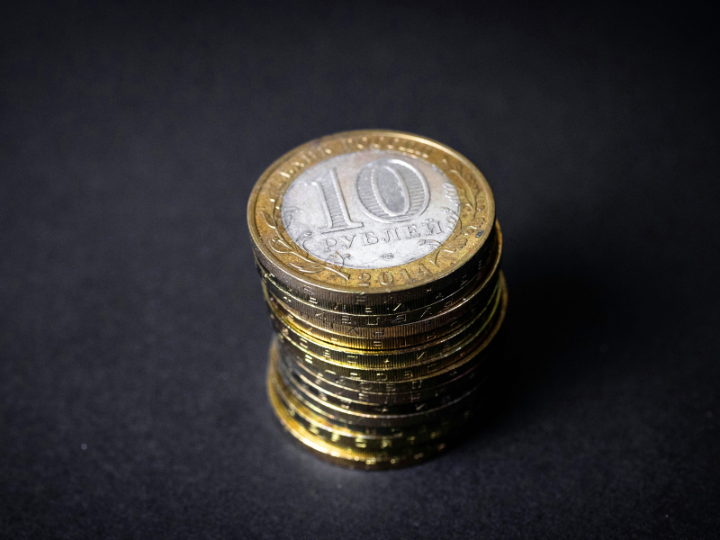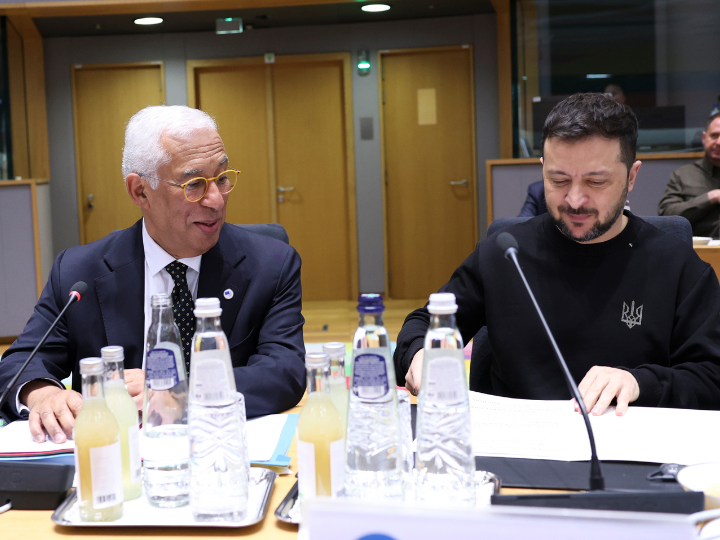by Alexandra Brzozowski
Eurozone finance ministers gave their political backing on Wednesday (5 May) to a G7 plan to provide loans to Ukraine by using windfall profits generated from Russian assets, which they are ready to discuss after a G7 leaders’ summit later in June.
“The discussion among ministers showed appreciation for the constructive engagement with G7 partners in this regard and full support for it to continue,” Eurogroup President Paschal Donohoe, who chairs meetings of eurozone finance ministers, said in a statement.
Wednesday’s virtual talks had been called to explore options on how to front-load financial aid to Ukraine by providing loans based on the windfall profits from immobilised Russian central bank assets.
G7 countries have jointly immobilised about $280 billion of such assets, with the majority held in the Belgium-based clearing house Euroclear.
The fresh backing came after G7 finance ministers last month warmed up to the plan, under which a sum of up to $50 billion would be drawn from the assets to help Ukraine’s war effort.
“Finance ministers will consider at their June meeting the need for further discussions following the G7 Summit in Apulia,” Donohoe said after the talks.
Leaders from the G7 countries – the United States, Canada, Japan, Britain, France, Germany, and Italy – are scheduled to meet in Italy on 13-15 June and consider different avenues of the proposal.
Under the G7 plans, profits from the Russian immobilised assets held in the EU would service the interest and could also pay back the capital of a future loan issued to Ukraine by either the US, or the US jointly with other G7 countries, or by the EU from its budget.
EU member states agreed earlier this year that using the windfall profits generated by the frozen capital is legally sound as the profits, contrary to the capital of the assets, do not legally belong to Russia.
The annual profits would be placed into a special fund that would pay for weapons for Ukraine and the country’s reconstruction.
Under the plans, 90% of the funds would initially be allocated to the European Peace Facility (EPF), the bloc’s mechanism to reimburse member states for weapons delivered to Kyiv, and then to the newly created Ukraine Assistance Fund (UAF).
The remaining 10% would be transferred to the EU budget and used to boost the capacity of the Ukrainian defence industry.
Once Ukraine’s needs shift from defence to reconstruction, the plan foresees the option to adjust the purpose of the funds.
To move ahead with the plan, people familiar with the talks said, there would need to be a need of risk-sharing between the EU and the US, as EU countries and the European Central Bank have been wary of a potential risk to the EU’s single currency
More ambitious US-proposal
Separately, Washington has been pushing a more ambitious proposal under which countries would agree to use the profits to provide a massive loan to Ukraine as soon as possible rather than settle for a few billion euros a year over a long-term period.
US Treasury Secretary Janet Yellen told the New York Times last week that the loan sum under consideration, which would be backed by profits and interest income, would amount to around $50 billion.
In order for the US-led plan to work, the EU would have to issue assurances to the loan issuer that the windfall profits from the Russian frozen assets would be made available to service it, EU officials said.
But the plan would rely heavily on the fact that Russian frozen assets remain frozen in the long term until Moscow agrees to pay reparations.
For that, the EU would also have to make changes to its Russia sanctions regime with respect to the frozen assets to remove uncertainty in decision-making.
The bloc is currently required to renew its Russia sanctions regime every six months, including the immobilisation of its central bank assets.
But such a roll-over of sanctions is on shaky ground because it requires unanimous approval by the bloc’s 27 member states and Hungary has in the past year become a hurdle in a series of EU decisions related to Ukraine.
According to a discussion paper for the Eurogroup ministers, an alternative would be for each G7 country to use the immobilised Russian assets in their own jurisdictions.
In this case, rather than use windfall profits generated from assets immobilised in the EU to repay loans from the US or other G7 members, they would be used to finance the principal and interest for a loan to Ukraine supported by the EU budget.
A hurdle for such an option would again be the need for a unanimous decision by the EU27 to use the bloc’s budget as a guarantee beyond 2025.
Another option under discussion would be to set up a separate sanctions regime concerning Russian Central Bank assets to circumvent the need for the six-month renewal of the current sanctions regime.
*first published in: Euractiv.com




 By: N. Peter Kramer
By: N. Peter Kramer
